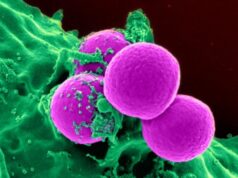Proteins that bind DNA or RNA are usually put in different categories, but researchers at Umeå University in Sweden and Inserm in France recently showed how the p53 protein has the capacity to bind both and how this controls gene expression on the levels of both transcription (RNA synthesis) and mRNA translation (protein synthesis). The discovery was presented in the July issue of the journalOncogene.
The p53 tumour suppressor protein is best known for its capacity to bind DNA and control gene expression at the level of transcription. Mutations that abolish the DNA binding activity are frequently found in human cancers. However, it has been known that p53 also harbours RNA binding capacity but this capacity and its cell biological role has been vastly overshadowed by its DNA-binding activity.
Together with his collaborators, Robin Fåhraeus, guest professor at the Department of Medical Biosciences at Umeå University and Research Director at Inserm in France, could show that p53 suppresses the synthesis of its negative regulator MDMX via a direct interaction between p53 and the MDMX mRNA. The researchers also show that RNA binding per se is not sufficient to suppress MDMX synthesis and that an additional trans-suppressor domain of p53 is also required. A classic p53 mutation that prevents DNA binding was shown to have differentiated activity towards MDMX synthesis.
“We found mutant p53 proteins that do not bind DNA instead have an effect towards mRNA translation,” says Robin Fåhraeus, who led the study. “It has been known that mutant p53s can promote tumour growth but it is not clear what lies behind this activity and RNA binding offers one possibility.”
Source: Umea University
Find your dream job in the space industry. Check our Space Job Board »
Research Reference:
- A-S Tournillon, I López, L Malbert-Colas, S Findakly, N Naski, V Olivares-Illana, K Karakostis, B Vojtesek, K Nylander, R Fåhraeus. p53 binds the mdmx mRNA and controls its translation. Oncogene, 2016; DOI:10.1038/onc.2016.236










